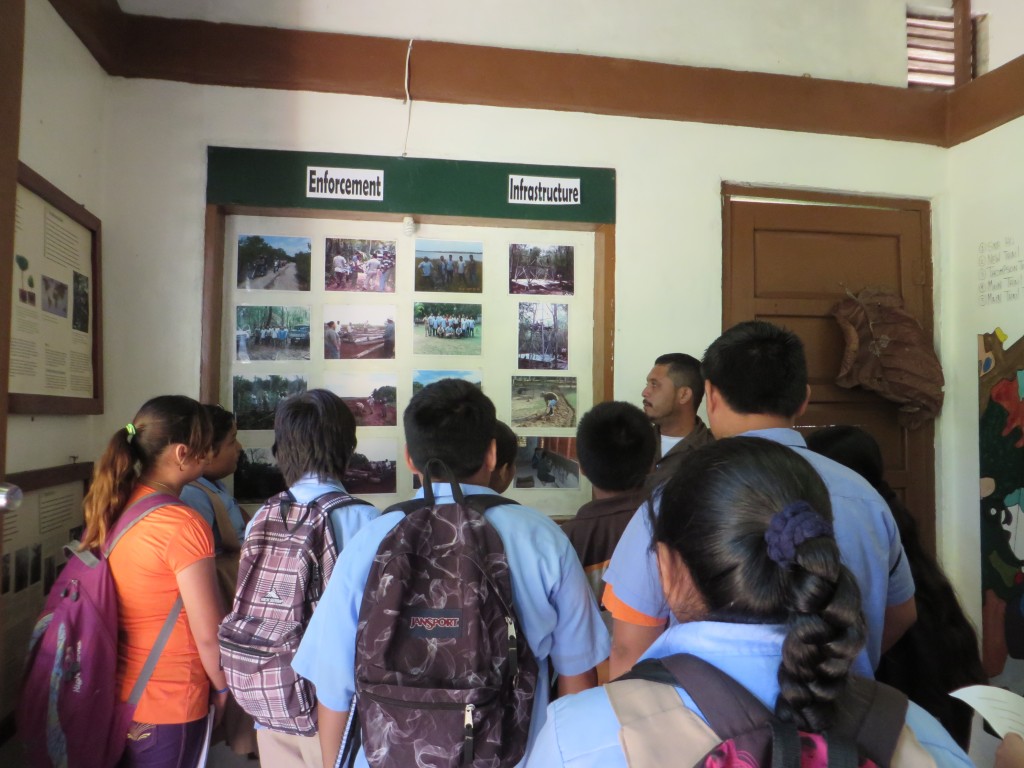by Winnie Courtene-Jones, Field Scientist, Belize
What is biodiversity? That was the question for grade 5 of the Sarteneja Roman Catholic school. We started the day with a trip to Shipstern Nature Reserve, home to a hugely diverse array of flora and fauna. This is an important site for many species, including the migratory American Woodstalk, which breed in the lagoons found in the reserve. Shipstern is also the only area in Belize where semi-deciduous Yucatan forest can be found, along with the even rarer Yucatan coastal dry forest – so what better place to learn about the importance of biodiversity?!

Grade 5 learn about the diversity of species found within the Shipstern Nature Reserve
Our guide from Shipstern first showed us all around the butterfly house, where the class learned about the life cycle of butterflies and how each species is dependent on a particular plant to lay their eggs and for the caterpillars to feed on. Next we had a walk around one of the trails, learning about the biodiversity of the nature reserve and the importance of this biodiversity for us, including the medicinal properties of certain plants, such as the gumbo-limbo tree, which is used to treat the skin rash and irritation caused by the sap of the black poisonwood tree.
The highlight of the trip, for the children and also for myself, was climbing the many many steps up the observation tower, some 30m above the ground; here there was an unobstructed panoramic view above the tree canopy. We could see our home town of Sarteneja, up the coast to Mexico and further south inland. It was an amazing view and emphasised the huge diversity of habitats encompassed by Shipstern Nature Reserve, and the value of protecting this.

One of the Shipstern guides explaining the lifecycle of butterflies and the dependence of each butterfly on different plant species for laying their eggs
Once back in Sarteneja, we returned to the school where we had a recap of all of the things the children had learned during their visit. The afternoon was rounded off by playing a butterfly-plant game to highlight the relationship between species, and the knock-on effect that removing one from the ecosystem would have. After a great day, with smiles and fun had by all, grade 5 had learnt about biodiversity, and the value of its conservation.

